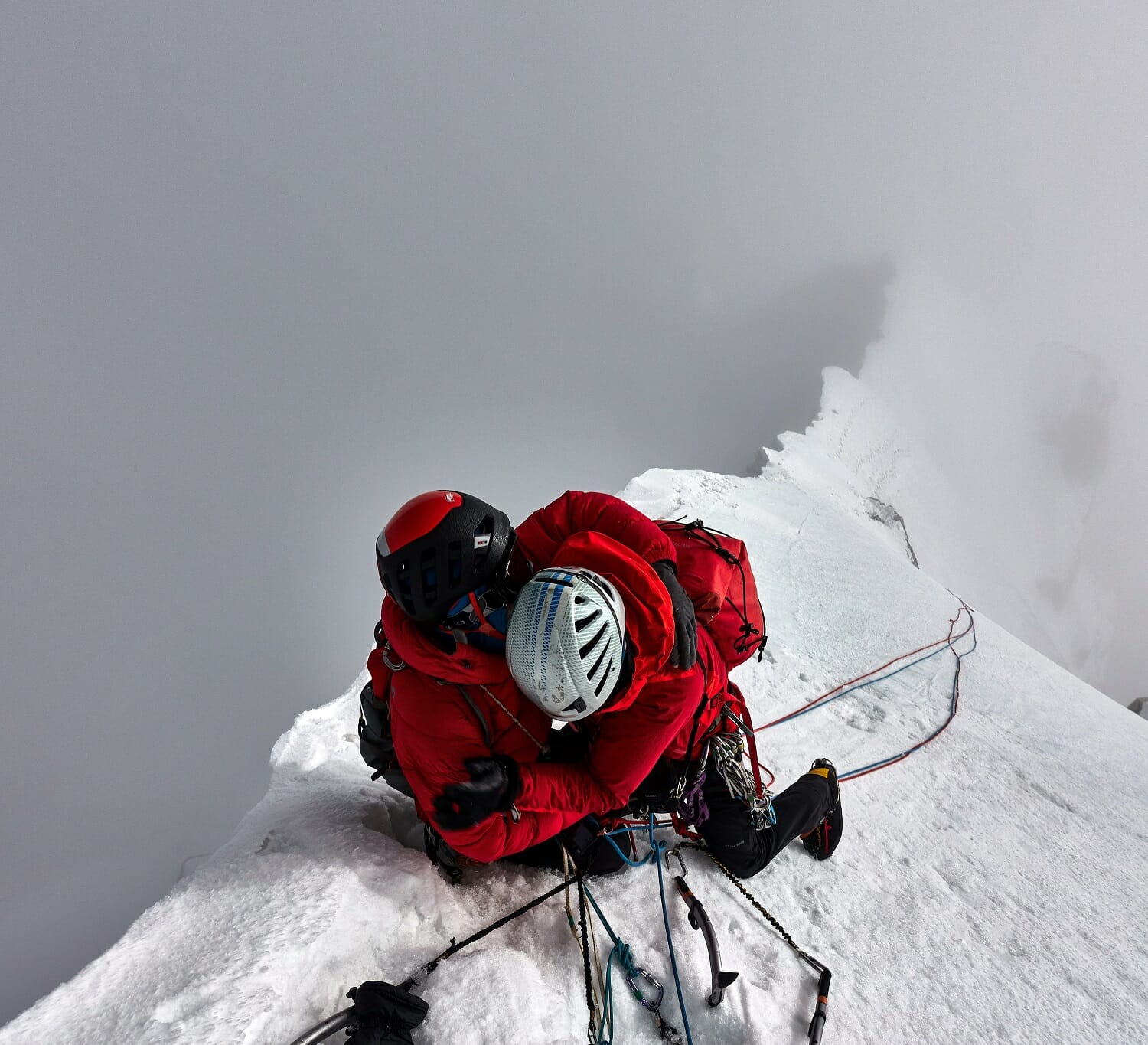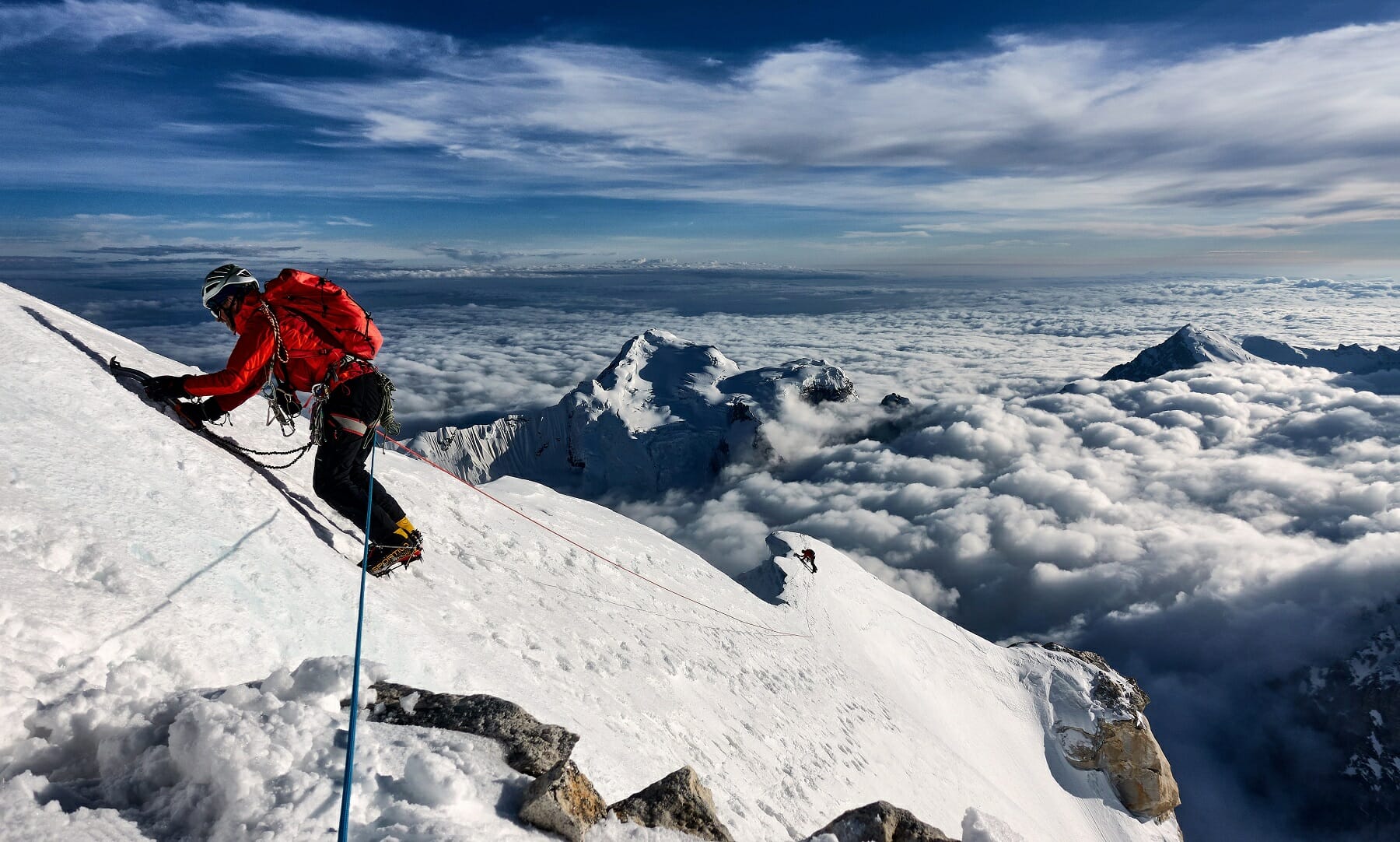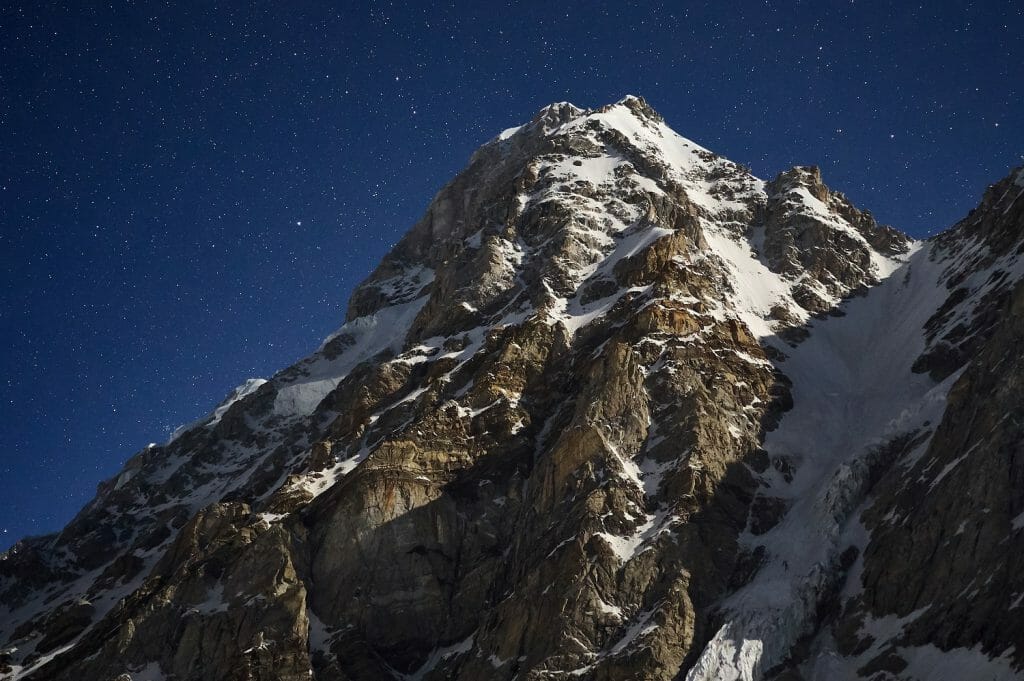Uphill Athlete received this story from British climbers Malcolm Bass, Guy Buckingham, and Paul Figg after they made the first ascent of the remote Janhukot (6,805 meters).We thought we would write to you to say thank you for sharing so much inspiration, and so much distilled knowledge and experience, through Training for the New Alpinism and the Uphill Athlete website and forum. I am writing this from our base camp on the side of the Gangotri glacier in India where we sit enjoying the afterglow of having made the first ascent of Janhukot, a remote, technical 6,800-meter peak 19 kilometers up-glacier from base camp (southwest buttress to south ridge, ED, Scottish IV, 3000m, 1700m vertical). Janhukot is the second Himalayan summit we have reached whilst being guided in our training by your work; in 2016 we made the first ascent of the Northwest Ridge of Gangstang (India, Himachal Pradesh, 6200m, 1200m vertical, Scottish 6, ED). We hope that our experience of using your system might also be of value to other folk on this forum, especially people in circumstances similar to our own. We make no claims to be great natural athletes, nor do we have extraordinary natural climbing talents. We (Guy Buckingham, Paul Figg, and I) are no spring chickens (48, 49, and 53) but do have a good base of fitness due to a lifetime of largely recreational mountain activities. Paul and I have full-time desk jobs and Guy does some of that as well as being a part-time (winter) mountaineering instructor. None of us have current responsibilities for young children.

Whilst we all climb recreationally at least once every week, and do an endurance session or two, we find that for our biannual spring trips to the Himalaya we need to become more organised in our training, and we broadly follow the Training for the New Alpinism system. We typically start getting more focused six months before the trip. Because our objectives are within our technical climbing abilities, we deprioritise rock, ice, and mixed climbing in favour of strength and endurance training. But because we don’t want to end up as “snow plodders” we still go rock, wall (gym), or winter climbing for fun on average twice per week.
We prioritise endurance training based on days or evenings of uphill hiking (on the steep bits) and slow running (on the flats), with a bit of road cycling thrown in (for sociability and to spare creaky knees). We gradually increase this from 5–6 hours six months out to about 12–15 hours weekly before leaving. We focus on going uphill as steeply as we can. Paul and I live in the Yorkshire Dales/Moors with ascents of about 250 meters vertical on our doorsteps so most of our hours are spent doing hill reps or gentle hill runs that link several hills together. Our local hills are sheep-grazed moorland with wooded sides, not unattractive, so these runs are often a healthy joy that feel more like recreation than training. But on wet, windy nights running alone after work with a head torch they can be a test of will. We keep the intensity moderate by breath-monitoring (Malcolm) or by gut feeling from years of competitive fell running (Paul). None of us do any intervals or other high-intensity work.
We tend to avoid eating during these sessions. We always carry weight, starting at about 5 kilograms and working up to once-weekly muscular endurance sessions with 20 kilograms in the last month. Typically our hours are spread over three sessions per week, and because you have convinced us of the importance of duration we try to make one of these sessions a long one, up to half the weekly hours in one go.
At weekends we might go winter climbing in Scotland where the approach with a climbing sack counts towards our hours, or fell running in the Lake District where we can easily clock up 2,000 meters vertical up and down in a short day up steep grass, bilberry, and even rock-definitive English alpine terrain! Scottish winter climbing days are our favourite as we get some endurance hours in, but with the added bonus of the fun of the climb. Steve will vouch for the training quality of Scottish winter approaches. But on some weekends life events or weather dictate the long sessions are done close to home, with more plodding up, down, and around the same familiar hills, but a great chance to catch up with friends, both the athletic and the less so, if taken at conversational pace.

Guy works as an instructor in Scotland in winter, so builds most of his endurance hours whilst at work, but sometimes still has to add some training runs to get the hours in, although he prefers to do so via his own recreational climbing. For all of us this Scottish winter climbing maintains our ice and mixed skills at the level needed for our Himalayan targets.
Guy and I do one or two sessions per week of systematic strength training with increasing weight. Tool deadhangs, pull-ups, Turkish Get Ups, fingerboarding, box step-ups, and core exercises are the favourites. Paul is a little more rock focused and does a couple of sessions on his home woody or at the bouldering wall/gym.
We send each other emails with details of our training at the end of each week, and for all of us this peer group pressure helps keep us at it. When Guy is instructing he records some frightening weekly volumes of vertical.
For Janhukot, base camp has been at 4,500 meters and after a couple of days here we went up the conveniently gentle flanks of Kedar Dome just behind camp to 5,000 meters, slept, then moved camp up to 5,500 meters and slept again. We rested three days at base camp to let our bodies respond to the acclimatisation, then set off on the 19-kilometer approach, which we spread over two days, eventually getting on the climb very early on the third day. We carried about 1,400 calories each per day of carb drinks and gels, hot chocolate, cereal bars, soups, and dehydrated meals.
The climb went well and six days later we were back at base camp, having completed an eight-day round trip. Of course it felt hard at times, but we felt warm enough, slept OK, didn’t feel hungry, and morale was good. For all of us the hardest day was yesterday, the long walk (stumble in my case) back down the glacier to base camp. Of course the climb could be done faster by fitter climbers, but we are satisfied with our fitness. Our recovery seems to be going well despite a suboptimal whiskey-based recovery strategy. We could do something today, but won’t. One mountain is enough for us, time to go home, time for fun rock climbing in the ever-reliable UK sunshine, and a long holiday from training plans.

Our training as described here might seem simple, perhaps disorganised. But it is underpinned by key principles that we have learned from you: The need for general endurance training volume instead of just climbing all time. A gradual increase in volume over the six-month training period. A focus on aerobic training at the sort of heart rates we will be able to maintain at altitude. Clarity about whether we need to train technical skills or general fitness: for our routes it is the latter, we would regard the need to climb a Scottish grade VII pitch at altitude as a routefinding error! Specificity in England means walking or scrambling uphill with a pack on; it might seem ridiculous but we seek out vegetated hillsides that are so steep they require pulling on bilberries and heather.
And continuity: just keeping at it for six months. In the context of our busy lives this means not aiming too high in terms of weekly volume, nor wasting our energies on system-shocking high-intensity training. Continuity for us also means making sure it is enough fun to keep us doing it, hence the centrality of Scottish and Lake District winter climbing.
We also have a sense of what we have to let go in order get these training hours done whilst organising an expedition. None of us are pushing hard in our careers. We drift away from less outdoors-minded friends. Cultural pursuits and other interests take a back seat. We miss improving our rock and mixed climbing. And when expedition organising and maximal training hours coincide, we overrely on partners, friends, colleagues, and family to keep the wheels of home life and work life turning. Which is why we only do an expedition every two years.

We find it easy to commit to training the Uphill Athlete way because we trust your advice. We trust it because of your long personal experience of using and coaching it, and because of the the consistency of some of your messages. But also because we can see that you are comfortable with altering or modifying your ideas in the light of new evidence or experience, for instance rethinking the measurement of intensity zones. But most of all we trust it because it works for us. So, thank you for making it available, especially in the free format of this website.
Best wishes,
Malcolm Bass
Guy Buckingham
Paul Figg
-by Uphill Athlete Malcolm Bass
For a detailed account of the team’s ascent, see their story on Planetmountain.com.

